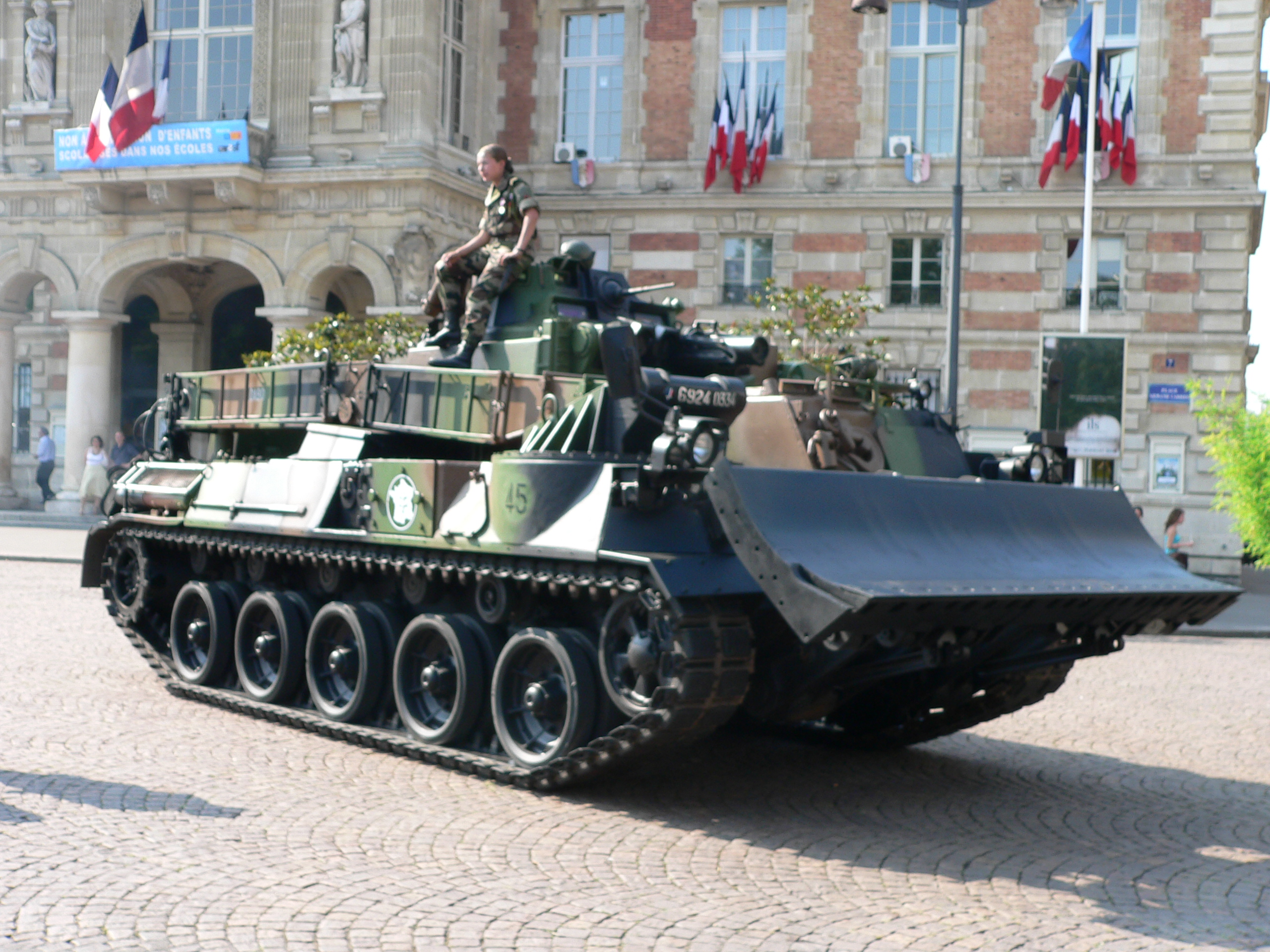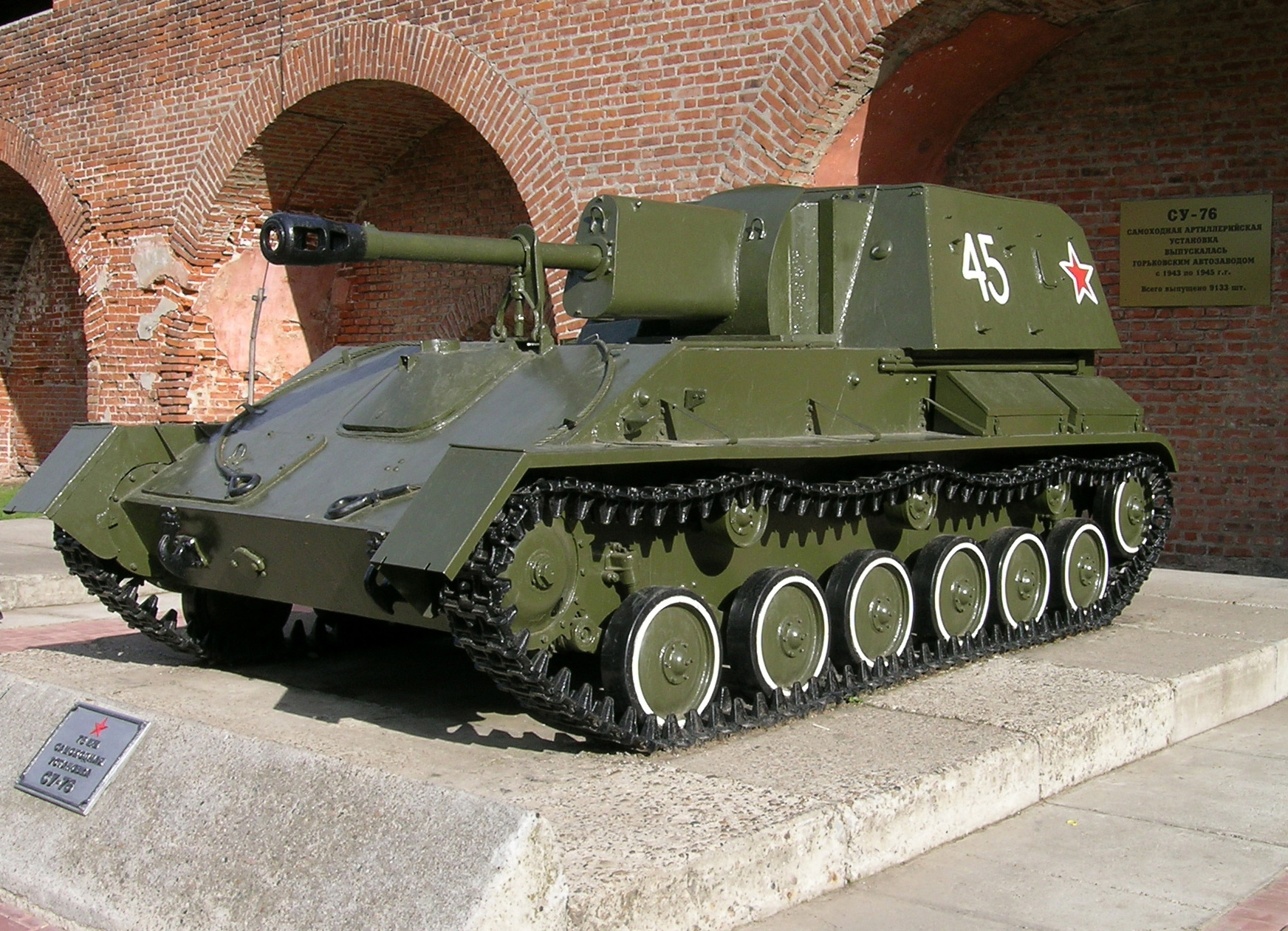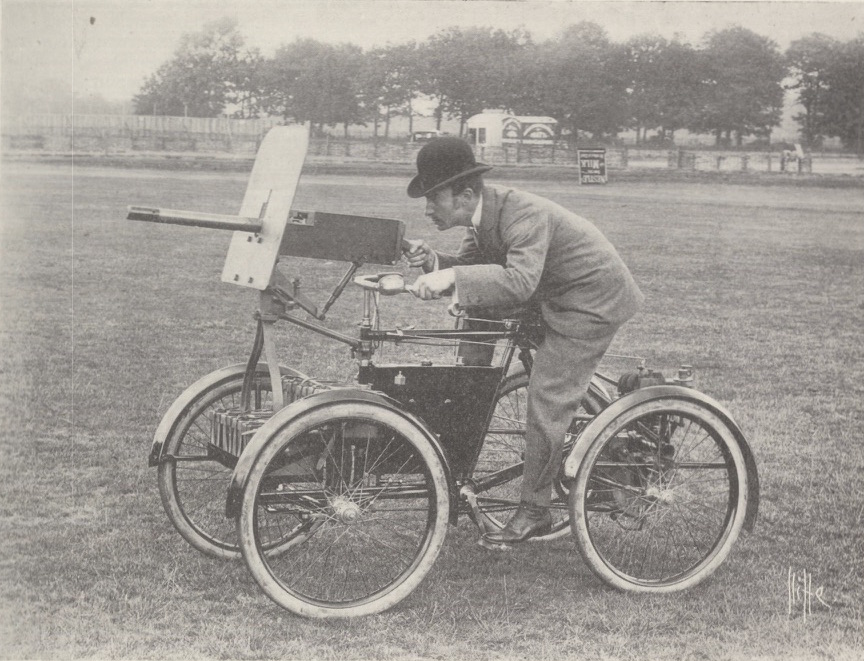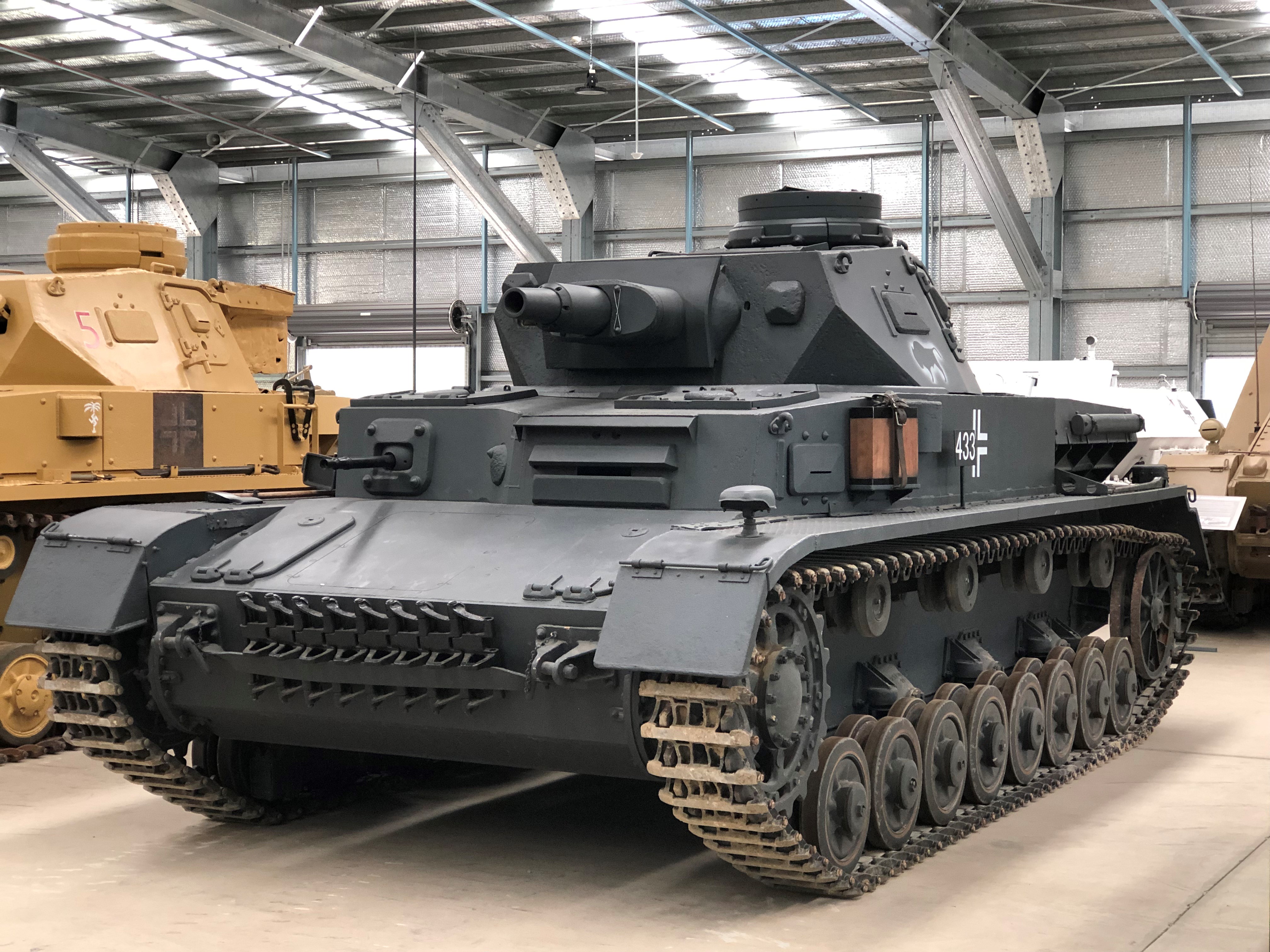|
Bridge-layer
An armoured vehicle-launched bridge (AVLB) is a combat support vehicle, sometimes regarded as a subtype of military engineering vehicle, designed to assist militaries in rapidly deploying tanks and other armoured fighting vehicles across gap-type obstacles, such as rivers. The AVLB is usually a tracked vehicle converted from a tank chassis to carry a folding metal bridge instead of weapons. The AVLB's job is to allow armoured or infantry units to cross craters, anti-tank ditches, blown bridges, railroad cuts, canals, rivers and ravines, when a river too deep for vehicles to wade through is reached, and no bridge is conveniently located, or sufficiently sturdy, a substantial concern when moving 60-ton tanks. The bridge layer unfolds and launches its cargo, providing a ready-made bridge across the obstacle in only minutes. Once the span has been put in place, the AVLB vehicle detaches from the bridge, and moves aside to allow traffic to pass. Once all of the vehicles have crossed ... [...More Info...] [...Related Items...] OR: [Wikipedia] [Google] [Baidu] |
Military Engineering Vehicle
A military engineering vehicle is a vehicle built for construction work or for the transportation of combat engineering, combat engineers on the battlefield. These vehicles may be modified civilian equipment (such as the Armored bulldozer, armoured bulldozers that many nations field) or purpose-built military vehicles (such as the AVRE). The first appearance of such vehicles coincided with the appearance of the first tanks, these vehicles were modified Mark I tank, Mark V tanks for bridging and mine clearance. Modern ''military engineering vehicles'' are expected to fulfill numerous roles such as; bulldozer, crane (machine), crane, grader, excavator, dump truck, breaching vehicle, bridging vehicle, military ferry, amphibious crossing vehicle, and combat engineer section carrier. History World War One A Heavy RE tank was developed shortly after World War I by Major Giffard LeQuesne Martel RE. [...More Info...] [...Related Items...] OR: [Wikipedia] [Google] [Baidu] |
Covenanter Tank
The Cruiser tank Mk V or A13 Mk III Covenanter was a British cruiser tank of the Second World War. The Covenanter was the first cruiser tank design to be given a name. Designed by the London, Midland and Scottish Railway as a better-armoured replacement for the Cruiser Mark IV, it was ordered into production in 1939 before pilot models were built. Problems with the design became apparent only after production was under way. The tank equipped various British armoured divisions for home defence and training. It never left the UK as poor engine cooling caused the Mk I to Mk III to be declared unfit for overseas service, especially in hot climates. This was rectified in the Mk IV after many corrective actions were undertaken but, by February 1944, it was declared obsolete. More than 1,700 of the type were built. It was named after the Covenanters, a Scottish religious and political movement at the time of the Wars of the Three Kingdoms. Development In 1938, the War Office had issu ... [...More Info...] [...Related Items...] OR: [Wikipedia] [Google] [Baidu] |
Combat Engineering Vehicle
A military engineering vehicle is a vehicle built for construction work or for the transportation of combat engineering, combat engineers on the battlefield. These vehicles may be modified civilian equipment (such as the Armored bulldozer, armoured bulldozers that many nations field) or purpose-built military vehicles (such as the AVRE). The first appearance of such vehicles coincided with the appearance of the first tanks, these vehicles were modified Mark I tank, Mark V tanks for bridging and mine clearance. Modern ''military engineering vehicles'' are expected to fulfill numerous roles such as; bulldozer, crane (machine), crane, grader, excavator, dump truck, breaching vehicle, bridging vehicle, military ferry, amphibious crossing vehicle, and combat engineer section carrier. History World War One A Heavy RE tank was developed shortly after World War I by Major Giffard LeQuesne Martel RE. [...More Info...] [...Related Items...] OR: [Wikipedia] [Google] [Baidu] |
Armoured Fighting Vehicle
An armoured fighting vehicle (British English) or armored fighting vehicle (American English) (AFV) is an armed combat vehicle protected by vehicle armour, armour, generally combining operational mobility with Offensive (military), offensive and defense (military), defensive capabilities. AFVs can be wheeled or Continuous track, tracked. Examples of AFVs are tanks, armored car (military), armoured cars, assault guns, Self-propelled artillery, self-propelled artilleries, infantry fighting vehicles (IFV), and armoured personnel carriers (APC). Armoured fighting vehicles are classified according to their characteristics and intended role on the battlefield. The classifications are not absolute; two countries may classify the same vehicle differently, and the criteria change over time. For example, relatively lightly armed armoured personnel carriers were largely superseded by infantry fighting vehicles with much heavier armament in a similar role. Successful designs are often ada ... [...More Info...] [...Related Items...] OR: [Wikipedia] [Google] [Baidu] |
Assault Gun
An assault gun (from , , meaning "assault gun") is a type of armored infantry support vehicle and self-propelled artillery, mounting an infantry support gun on a protected self-propelled chassis, intended for providing infantry with heavy direct fire support during engagement, especially against other infantry or fortified positions, secondarily also giving some armored protection and anti-armor capability. Assault guns were pioneered by the Soviet Union and Nazi Germany during the 1930s, initially being self-propelled guns with direct fire in mind (such as the Soviet SU-5-1), with Germany introducing the first purpose-built (and purpose-named) assault gun, the , in 1940. Concept, doctrine and design The concept of the assault gun can be simplified into: a protected self propelled infantry gun, intended for the infantry brigades, in order to give infantry: mobile heavy direct fire capability against protected enemy positions and threats, which can move with infantr ... [...More Info...] [...Related Items...] OR: [Wikipedia] [Google] [Baidu] |
Self-propelled Anti-aircraft Weapon
An anti-aircraft vehicle, also known as a self-propelled anti-aircraft gun (SPAAG) or self-propelled air defense system (SPAD), is a mobile vehicle with a dedicated anti-aircraft warfare, anti-aircraft capability. Specific weapon systems used include machine guns, autocannons, larger guns, or surface-to-air missiles, and some mount both guns and longer-ranged missiles (e.g. the Pantsir missile system). Platforms used include both trucks and heavier combat vehicles such as armoured personnel carriers and tanks, which add protection from aircraft, artillery, and small arms fire for front line deployment. Anti-aircraft guns are usually mounted in a quickly-traversing gun turret, turret with a high rate of elevation, for tracking fast-moving aircraft. They are often in dual or quadruple mounts, allowing a high rate of fire. In addition, most anti-aircraft guns can be used in a direct-fire role against surface targets to great effect. Today, surface-to-air missiles (generally mounte ... [...More Info...] [...Related Items...] OR: [Wikipedia] [Google] [Baidu] |
Armoured Personnel Carrier
An armoured personnel carrier (APC) is a broad type of armoured military vehicle designed to transport personnel and equipment in combat zones. Since World War I, APCs have become a very common piece of military equipment around the world. According to the definition in the Treaty on Conventional Armed Forces in Europe, an APC is "an armoured combat vehicle which is designed and equipped to transport a combat infantry squad and which, as a rule, is armed with an integral or organic weapon of less than 20 millimetres calibre." Compared to infantry fighting vehicles (IFVs), which are also used to carry infantry into battle, APCs have less weapon, armament and are not designed to provide direct fire support in battle. Infantry units that travel in APCs are known as mechanized infantry. Some militaries also make a distinction between infantry units that use APCs and infantry units that use IFVs, with the latter being known as armoured infantry. History One of the first armored ve ... [...More Info...] [...Related Items...] OR: [Wikipedia] [Google] [Baidu] |
Armored Car (military)
A military armored (Commonwealth English, also spelled armoured) car is a wheeled armoured fighting vehicle, historically employed for reconnaissance, internal security, armed escort, and other subordinate battlefield tasks. With the gradual decline of mounted cavalry, armored cars were developed for carrying out duties formerly assigned to light cavalry. Following the invention of the tank, the armoured car remained popular due to its faster speed, comparatively simple maintenance and low production cost. It also found favor with several Colonial troops, colonial armies as a cheaper weapon for use in underdeveloped regions. During World War II, most armoured cars were engineered for reconnaissance and passive observation, while others were devoted to communications tasks. Some equipped with heavier armament could even substitute for tracked combat vehicles in favorable conditions—such as pursuit or flanking maneuvers during the North African campaign. Since World War II t ... [...More Info...] [...Related Items...] OR: [Wikipedia] [Google] [Baidu] |
SE 003429
SE, Se, or Sé may refer to: Initialisms * Standard Edition (e.g. Java Platform, Standard Edition) * Special edition, Special Edition * Second Edition (e.g. Windows 98#Windows 98 Second Edition, Windows 98 Second Edition) Arts and entertainment * Sé (album), ''Sé'' (album), by Lúnasa, 2006 * Se (instrument), a traditional Chinese musical instrument Businesses and organizations * ''Societas Europaea'', a form of legal entity registered under European Union law * Sea Ltd (NYSE: SE), tech conglomerate headquartered in Singapore * Slovenské elektrárne, electric utility company in Slovakia * XL Airways France, IATA airline designator SE * Southeastern (train operating company), or SE Trains Limited, in England Places * Sè, Atlantique, Benin * Sè, Mono, Benin *Subprefecture of Sé, São Paulo, Brazil **Sé (district of São Paulo) **Sé (São Paulo Metro), a station *Sé, Hungary *Sé, Macau *Sé (Angra do Heroísmo), Terceira, Azores, Portugal *Sé (Braga), Portugal *Sé ... [...More Info...] [...Related Items...] OR: [Wikipedia] [Google] [Baidu] |
Panzer IV
The IV (Pz.Kpfw. IV), commonly known as the Panzer IV, is a German medium tank developed in the late 1930s and used extensively during the Second World War. Its ordnance inventory designation was Sd.Kfz. 161. The Panzer IV was the most numerous German tank and the second-most numerous German fully tracked armoured fighting vehicle of the Second World War; 8,553 Panzer IVs of all versions were built during World War II, only exceeded by the StuG III assault gun with 10,086 vehicles. Its chassis was also used as the base for many other fighting vehicles, including the assault gun, the self-propelled anti-tank gun, the and self-propelled anti-aircraft gun, and the self-propelled gun. The Panzer IV saw service in all combat theatres involving Germany and was the only German tank to remain in continuous production throughout the war. The Panzer IV was originally designed for infantry support, while the similar Panzer III was to fight armoured fighting vehicles. However, ... [...More Info...] [...Related Items...] OR: [Wikipedia] [Google] [Baidu] |
Self-propelled Artillery
Self-propelled artillery (also called locomotive artillery) is artillery equipped with its own propulsion system to move toward its firing position. Within the terminology are the self-propelled gun, self-propelled howitzer, self-propelled mortar, and self-propelled rocket artillery. They are high-mobility vehicles, usually based on continuous tracks carrying either a large field gun, howitzer, mortar (weapon), mortar, or some form of rocket (weapon), rocket/missile launcher. They are usually used for long-range indirect-fire, indirect bombardment support on the battlefield. In the past, self-propelled artillery has included direct-fire vehicles, such as assault guns and tank destroyers, which were typically well-armoured vehicles often based upon the chassis of a tank. In lieu of the standard tank's general-purpose tank gun, main gun that fired both high-explosive and anti-tank ammunition, direct-fire vehicles had specialized roles, with assault guns providing close fire-supp ... [...More Info...] [...Related Items...] OR: [Wikipedia] [Google] [Baidu] |
Valentine Tank
The Tank, Infantry, Mk III, Valentine was an infantry tank produced in the United Kingdom during World War II. More than 8,000 Valentines were produced in eleven marks, plus specialised variants, accounting for about a quarter of wartime British tank production. The variants included riveted and welded construction, petrol and diesel engines and increases in armament. It was supplied in large numbers to the USSR and built under licence in Canada. It was used by the British in the North African campaign. Developed by Vickers, it proved to be strong and reliable. Name There are several proposed explanations for the name ''Valentine''. According to the most popular one, the design was presented to the War Office on St Valentine's Day, 14 February 1940, although some sources say that the design was submitted on Valentine's Day 1938 or 10 February 1938. White notes that "incidentally" Valentine was the middle name of Sir John Carden, 6th Baronet, Sir John Carden, the man responsible ... [...More Info...] [...Related Items...] OR: [Wikipedia] [Google] [Baidu] |









